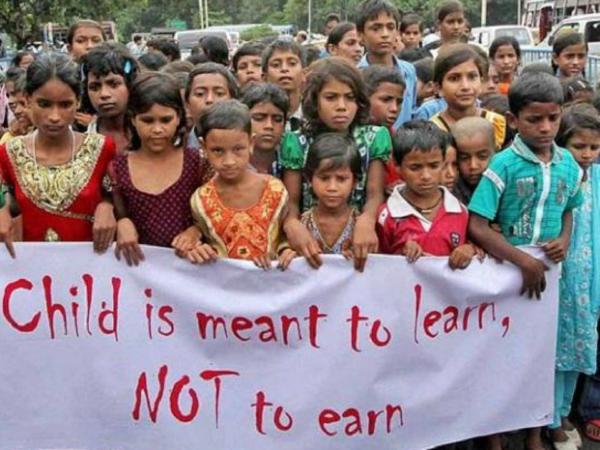Along with the government, the society also came forward

The number of child labor increasing year after year was likewise a matter of concern. This was further fueled by the Corona crisis. The figure of children who were orphaned during the Corona period is terrifying. A large number of children have become orphans due to the absence of their parents. Thankfully, the central and state governments have taken the responsibility of providing education and proper care of these orphan children till they complete the age of 21 years. Governments have entrusted the responsibility to the district magistrates to ensure that no child wanders from door to door, to avoid labor and labor and child labor. If this was not done, the number of child laborers could have increased further. In fact, child labor has become a global problem.
The lyrics of ‘Ninhe-Munne Bache Teri Muti Mein Kya Hai, Muhi Mein Hai Takdeer Hamari’, a song from the Hindi film ‘Boot Polish’ of the 1950s, not only evokes a sigh and sympathy for the blazing childhood in the furnaces of child labour, but also of the rulers. It is also an expression of deep despair towards the non-control of child problems and the harassment and crime associated with them. It may be the compulsion of some families to make children work, but it is also the responsibility of the society to get them out of that quagmire. Unless the society is vocal, the talk will not work.
Merely questioning the government-system will not work, solutions have to be found collectively. Seeing children begging on the streets, children working on brick kilns, children involved in various crimes and children deprived of education, we do not have to move forward, but come back and challenge the system for them. Our biggest crime is to turn our backs on seeing them. Our silence only encourages acts like child labour. Stopping child labor is not the responsibility of governments alone. This problem cannot be solved by any one person, for this social consciousness, public awareness and awareness will be required. To stop child labor and child crime, all the organizations, government and non-government organizations, NGOs working in this area, including the Ministry of Women, Labor Department, Social Welfare Department and NIPSID will have to be engaged.
The latest figures show that for the past decade or so, the highest number of child trafficking in Asia has happened in India. In backward states, a large gang of child traffickers is active in this work, which kidnaps innocent children and puts them to beg or wage work after some time. Some even throw children into the world of crime. Statistics from the National Crime Bureau show that trafficking gangs kidnap hundreds of children every day across India, who are then thrown into the fire of begging, labour, child crime and child labour. Most of the incidents of snatching done on roads, markets and other places are carried out by young children. Industries, factories and companies also get children to do wages because they do not have to pay anything in return, without paying, they get children to do physical work by feeding them some food.
Efforts of both government and social should not be insufficient in stopping child labor, everyone should honestly sacrifice in this responsibility. Under the Child Labor Act 1986, getting child labor done in dhabas, houses, hotels is a punishable offense. Despite this, people encourage child labor. The Gurupad Swami Committee, formed in 1979, did a great job to stop child labor. After that separate ministries, commissions, institutions and committees were formed, but the matter then stops there that unless there is public participation, the government efforts will also prove to be insufficient.
21-22 crore children around the world are still throwing their childhood in the furnaces of labor. This number is around two and a half crore in India. A similar incident happened a few months back on the Dehradun Highway. A couple was drinking tea at the hotel, the child who came to give tea was sobbing and crying. When the couple asked the reason for her crying, she told that she was forcibly brought from Jharkhand. The couple secretly called the local police. The police reached and took the child in their custody and took them to the police station. Later it was found that the child was brought from there by kidnapping and sold to the Dhaba person for fifty thousand.
Ramesh Thakur







